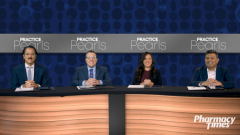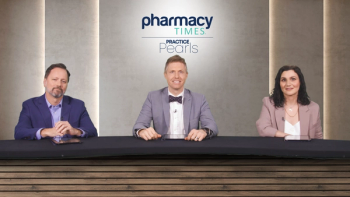
Gene Therapy Advances in Hemophilia A Treatment
Atta Chowdhry, RPh, and Robert Sidonio Jr, MD, MSc, discuss the emergence of gene therapy as an exciting option for patients with hemophilia A and highlight benefits, limitations, and ongoing research in the field.
Episodes in this series

Jonathan Ogurchak, PharmD, CSP: Let’s finish up talking about the therapies themselves. I know we’ve talked about the more legacy products with factor, you will produce with them emicizumab, but gene therapy continues to come up in many aspects of care as a potential option for certain patient populations, and hemophilia A is included in that. Dr Chowdhry, are there any exciting sorts of therapies that you’re seeing heading through the pipeline that may have some potential?
Atta Chowdhry, RPh: There was a gene therapy approved for hemophilia A on June 29th of this year, Roctavian. At this point, there is a lot of excitement out there. But the only thing is, like any other product in this community, it had to take a little while to [get] traction. People wanted to see how the brave, the first wave of people who are going to go try it, how they work with this. this. With the Roctavian, the thing is that you need to have some immunosuppressive therapy in order for the gene therapy to act in the labor which causes expressed factor activity. In the 3-year study which came out, it shows that there is some decline in expressed factor activity over time. There is excitement, but at the same time, there is a caution to look at everything closely.
Robert Sidonio Jr, MD, MSc: It’s really exciting, the gene therapy, and like we were mentioning before, it’s not going to be for everybody. We don’t expect the majority of patients to decide to do this, and there’s going to be limitations on this as well. Patients like to have this choice. There have been hundreds of patients who have been dosed on trial, and I’ve heard there’s been at least 3 or 4 patients who have been dosed in the United States. I don’t know what the outcomes are, but like you were mentioning, it’s a nice option. It’s a single infusion. Typically, they have to be in the clinic all day long for observation for at least 3 hours afterwards as well. It seems like it’s reasonably well tolerated. There’s some things that we haven’t figured out because it’s an AAV5 vector or a vehicle for it. There are people who have natural immunity to this, so a third of the patients may not even qualify because they already have preexisting antibodies. That eliminates a good chunk of patients. The companies offer free testing to see if you qualify for this, so it’s a nice thing that you can do. You can offer this to your patients, if they’re thinking about it, just do the test, see if you actually qualify, because if you don’t, then they don’t have to think about it anymore. They can wait for the next product. It is an option. It’s something where most places are trying to set up. There’s going to be a lot of special preparation and rules, obviously, when you’re talking about biologic therapy. But it’s an exciting first step into this. There are a bunch of products that are probably going to come out in the year or two afterwards. You’ll see probably progression away from using viral particles and maybe using lipid nanoparticles. It’s just going to keep getting better and better over time. But it’s exciting. We know that at least in the first year they have great expression. Like you mentioned, over the next 3 to 5 years, they start to lose this, because it’s expressed in the liver. When that cell dies, you lose that factor production. If you ask some patients, if you tell them, “Well, you could have like 5 to 6 years and not require any prophylaxis,” some patients say, that’s great, I’ll take it. Right now, every place is trying to get set up, the contracts, we’re trying to get insurance to review this as well. I foresee a lot of more patients getting this early next year when this is sorted out. Because we know there’s a high up-front cost, but if you look at it over time, it actually could be potentially cost saving. It’s an exciting time for people and some patients. Of course, this is for only adults with severe hemophilia A.
Transcript is AI generated and reviewed by a Pharmacy Times editor.
Newsletter
Stay informed on drug updates, treatment guidelines, and pharmacy practice trends—subscribe to Pharmacy Times for weekly clinical insights.


